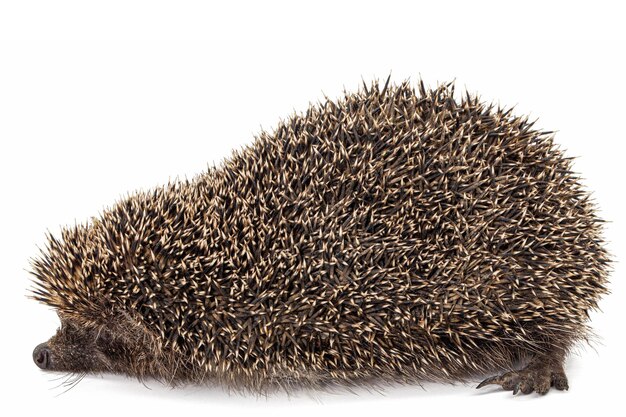Common Hedgehog (Erinaceus europaeus) Isolated on White Background – Free Stock Photo Download
Common Hedgehog: A Closer Look
The common hedgehog, scientifically known as Erinaceus europaeus, is often referred to as the West European hedgehog. This small, nocturnal creature is known for its distinct spiny coat and adorable face. Found in gardens, woodlands, and fields across Europe, hedgehogs are loved by many for their unique appearance and intriguing behavior.
Physical Characteristics
The hedgehog has a rounded body covered in a layer of sharp spines, which serve as a defense mechanism against predators. Here are some key physical features:
- Size: Adult hedgehogs typically measure between 24 to 30 cm in length.
- Weight: They weigh around 600 grams to 2 kg, depending on the season.
- Color: Their spines are usually brown or gray, while their faces are often light tan or cream.
Habitat and Distribution
The common hedgehog is commonly found in various habitats, including:
- Gardens: They love to roam through overgrown grass and bushes.
- Woodlands: Hedgehogs thrive in wooded areas where food is plentiful.
- Fields: Open fields provide plenty of insects, which are a staple in their diet.
Diet and Feeding Habits
Hedgehogs are primarily insectivores. Hereâs a glance at what they typically eat:
- Insects: Beetles, caterpillars, and slugs are all favorite meals.
- Fruits: They also enjoy ripe fruits such as apples and berries.
- Pet Food: Some hedgehog lovers offer cat or dog food as a supplementary diet.
The Importance of Hedgehogs in Our Ecosystem
Hedgehogs play a vital role in maintaining the balance of their natural environment. By keeping insect populations in check, they help reduce the number of pests that can damage crops and gardens. Additionally, their foraging habits contribute to soil health as they dig into the ground to hunt for food.
Conservation Status
While common hedgehogs are currently widespread, their populations are declining in some areas due to habitat loss and increased road traffic. Conservation efforts are essential to ensure their survival. Here are a few ways to help protect hedgehogs:
- Creating Safe Spaces: Allow natural areas in your garden for hedgehogs to forage.
- Reducing Pesticide Use: Limiting chemicals can help sustain their food sources.
- Providing Shelter: Making habitats with logs, leaves, or purpose-built hedgehog houses will offer safe nesting spots.
Conclusion
The common hedgehog is a charming and beneficial species that adds character to our gardens and parks. By learning about their needs and habits, we can all contribute to their well-being and ensure that these delightful creatures continue to thrive in our ecosystems.












